I’m not one to push products lightly, but let me tell you, the Withings BPM Connect has earned its spot on my arm and in my daily routine.
If you’re serious about keeping tabs on your heart health without the hassle of clunky devices or confusing interfaces, this sleek, FDA-cleared blood pressure monitor is a game-changer.
It’s portable, accurate, and syncs effortlessly with your phone, making it perfect for anyone who wants to stay proactive about their health. Trust me, you’ll want to make room for this in your life.
My Journey With The Withings BPM Connect
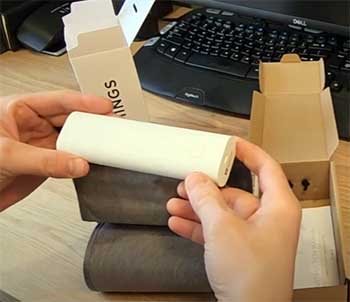
Picture this: it’s 6 a.m., my coffee’s still brewing, and I’m groggy but determined to start my day right.
I reach for my Withings BPM Connect, wrap it around my arm, and with one press of a button, I’ve got my blood pressure and heart rate readings in under a minute.
The first time I used it, I was skeptical—could something this compact and stylish actually deliver accurate results?
But after months of using it, I’m hooked.
The device is about the size of a soda can, with a soft, flexible cuff that feels like it was designed with actual humans in mind.
No bulky tubes, no loud pumps—just a quiet, smooth process that fits into my morning routine like it’s always been there.
My initial setup was a breeze. I downloaded the Withings Health Mate app, paired the device via Bluetooth in seconds, and was ready to go. The app’s interface is clean, and I love how it syncs my readings automatically, so I don’t have to scribble numbers on a notepad like I’m stuck in the ’90s.
The first reading I took showed my systolic and diastolic pressures, plus my heart rate, all displayed on the device’s LED screen with a color-coded indicator—green for good, yellow for caution, red for “call your doctor.”
That first green light felt like a small victory, especially since I’ve been working on managing stress and staying active.
What surprised me most was how portable it is. I’ve taken it on work trips, tucked into my carry-on, and it’s never been a hassle. During a recent trip, I used it in a hotel room, and the readings were just as consistent as at home.
I even let my sister try it, and the guest mode ensured her data didn’t mess with mine. The battery life is another win—I’ve charged it maybe twice in six months, which is a relief for someone like me who forgets to plug things in.
My only gripe early on was figuring out the button presses to switch users, but once I got the hang of it, it was smooth sailing. This device has become my go-to for keeping my health in check, and I’m not looking back.
Pros of The Withings BPM Connect
- Spot-On Accuracy You Can Trust
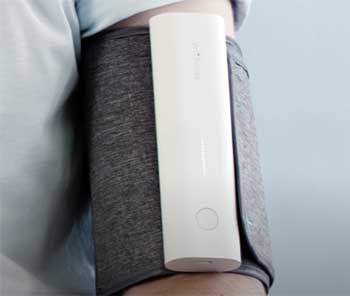
Let’s talk about the big one: accuracy.
When I first started using the Withings BPM Connect, I was paranoid it might give me wonky numbers.
But after cross-checking it with my doctor’s professional-grade monitor during a visit, I was impressed—the readings were nearly identical.
The device is FDA-cleared, which gives me peace of mind that it’s been rigorously tested.
Whether I’m checking my blood pressure after a stressful day or first thing in the morning, the results feel reliable, and the app’s trend tracking helps me spot patterns over time.
It’s like having a cardiologist’s insight in my pocket.
- Portability That Fits Your Life
I can’t overstate how much I love the compact design. The Withings BPM Connect rolls up into a neat little package, smaller than my sunglasses case. I’ve tossed it into my bag for weekend getaways or even just to the office when I want to check my stats during a hectic day.
Unlike those clunky monitors that scream “medical device,” this one’s discreet and stylish. The soft fabric cuff wraps around the main unit, so there’s no fumbling with extra parts. It’s perfect for anyone who’s always on the move but still wants to stay on top of their health.
- Seamless App Integration
The Health Mate app is where this device shines. Every reading syncs automatically via Wi-Fi or Bluetooth, so you don’t need your phone nearby to save data. I can pull up my history, see graphs of my blood pressure trends, and even email reports to my doctor with a tap.
The app’s color-coded feedback makes it easy to understand whether my numbers are in the healthy range or if I need to take it easy. Plus, it integrates with Apple Health, so all my health data lives in one place. It’s like having a personal health assistant without the annoying clipboard.
- Long-Lasting Battery Life
I’m notorious for forgetting to charge my gadgets, but the Withings BPM Connect doesn’t care. One charge lasts up to six months, even with daily use. It uses a micro-USB cable, which isn’t the most modern, but since I’m charging it so rarely, it’s not a dealbreaker.
The app even has a battery monitor, so I’m never caught off guard. This kind of low-maintenance design is a lifesaver for someone like me who just wants a device that works without constant babysitting.
- Multi-User and Guest Mode
If you’re sharing this with family, the Withings BPM Connect has you covered. It supports up to eight users, each with their own profile in the app. I’ve used it with my partner, and switching between us is as simple as a few button presses after the reading.
The guest mode is a nice touch for one-off uses, like when my mom visited and wanted to check her stats. Her readings didn’t get mixed up with mine, which kept my data clean and organized. It’s a small feature, but it makes the device feel thoughtful and practical.
Also Read: Is VitaWatch Glucose Monitor Any Good?
Cons of The Withings BPM Connect
- Tight Cuff Can Feel Snug
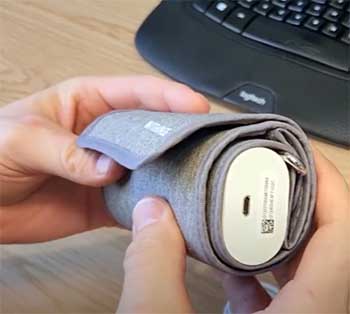
Don’t get me wrong, the cuff is well-designed, but it can feel a bit tight during measurements.
I’ve noticed it constricts more than some other monitors I’ve tried, which can be uncomfortable, especially if you’re taking multiple readings in a row.
It’s not a dealbreaker, but if you’ve got sensitive arms or just don’t like that squeezed feeling, it might take some getting used to.
I found angling the cuff slightly helped, but it’s worth mentioning for anyone who prioritizes comfort.
- Outward-Facing Display Quirks
The LED display is crisp and easy to read, but here’s the catch: it faces outward when you wear the cuff. This means you have to twist your arm or lean forward to see your results, which feels a bit awkward, especially if you’re using it alone.
I’ve gotten used to it, but I wish the screen was angled toward the user for easier viewing. It’s a small design flaw in an otherwise sleek package, but it can be annoying in the moment.
- Premium Price Tag
At around $100, the Withings BPM Connect isn’t the cheapest option out there. You can find basic arm monitors for half that price, so it’s definitely a premium purchase. For me, the portability, app integration, and battery life justify the cost, but if you’re on a tight budget or don’t need all the smart features, you might hesitate.
It’s an investment, no question, but one that I think pays off if you value convenience and data tracking.
- Micro-USB Charging Feels Dated
In a world of USB-C everything, the micro-USB charging port feels like a step back. It’s not a huge issue since you’re only charging every six months, but it’s one extra cable to keep track of if you’ve already ditched micro-USB for newer devices.
I’d love to see Withings upgrade to USB-C in future models, but for now, it’s a minor inconvenience that doesn’t detract much from the overall experience.
- User Interface Could Be Smoother
The single-button interface is simple, but it’s not always intuitive. Switching between users or selecting triple-measurement mode requires specific short or long presses, which took me a few tries to master. The app is great, but the on-device controls could be more user-friendly.
Once you learn the button dance, it’s fine, but I’ve had moments of frustration when I accidentally cycled past my name or triggered the wrong mode.
Maintenance Tips For Your Withings BPM Connect
- Keep the Cuff Clean and Intact
The fabric cuff is one of the best parts of this device, but it’s not immune to wear and tear. I make it a habit to wipe it down with a damp cloth after a few uses, especially if I’ve been sweating or using it after a workout. Avoid harsh chemicals—mild soap and water do the trick.
Also, be gentle when rolling it up for storage. I’ve found that folding it loosely around the device, as it’s designed, prevents creases and keeps the Velcro in good shape. A well-cared-for cuff ensures accurate readings and a longer lifespan.
- Store It Properly to Avoid Damage
I learned early on that tossing the BPM Connect into a crowded bag isn’t the best idea. The plastic body can get scuffed, and the cuff might snag on other items. I keep mine in a small padded case when traveling, which protects it from bumps and scratches.
At home, I store it in a drawer away from direct sunlight or heat sources, which could degrade the materials over time. Proper storage keeps it looking and working like new, which is key for a device you’re relying on for health data.
- Charge Smart to Maximize Battery Life
The six-month battery life is a dream, but you still need to charge it eventually. I plug mine in when the app’s battery monitor shows it’s getting low, usually every five to six months. To avoid overcharging, I unplug it once it’s full, which takes about an hour.
If you’re not using the device for a while, store it with a partial charge—around 50%—to prevent battery degradation. Also, stick to the included micro-USB cable or a high-quality replacement to avoid any charging issues.
- Update the App Regularly
The Health Mate app is the backbone of this device, so keeping it updated is crucial. I check for updates every couple of months to ensure I’ve got the latest features and bug fixes.
An outdated app can cause syncing issues, which is the last thing you want when you’re trying to track your health. If you run into connectivity problems, unpairing and re-pairing the device through the app usually does the trick. Staying on top of updates keeps the whole system running smoothly.
- Check Cuff Fit for Accurate Readings
A loose or overly tight cuff can throw off your readings, so I always double-check the fit before starting a measurement. The cuff should be snug but not constricting, with the bottom edge about an inch above your elbow.
I’ve found that taking a moment to adjust it—especially if I’m in a rush—makes a big difference in accuracy. If you share the device with others, make sure everyone knows how to position it correctly. Withings includes clear instructions, but it’s worth revisiting them to ensure you’re getting the most reliable data.
Comparing The Withings BPM Connect To Other Brands
- Withings BPM Connect Vs. Medline Blood Pressure Monitor
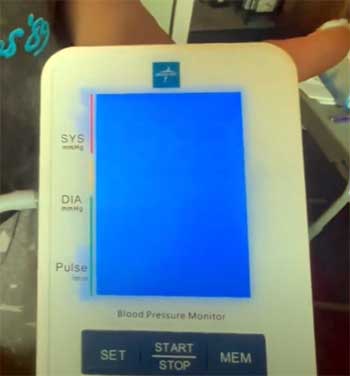
I gave the Medline Automatic Digital Blood Pressure Monitor (MDS4001) a try, and it’s a solid option, especially if you’re looking for something budget-friendly, typically priced around $50-$70.
Its large LED display is a standout, with clear, backlit numbers that make reading results a breeze, even in low light.
The rechargeable battery is a nice touch, lasting weeks with daily use, unlike many monitors that rely on disposable AA batteries.
It also stores up to 120 readings for two users, which is great for shared households.
However, the Medline lacks Wi-Fi syncing, relying solely on Bluetooth, so you need your phone nearby to save data.
I found its cuff less comfortable than the Withings’ soft fabric one, and it doesn’t integrate with broader health platforms like Apple Health. The Withings BPM Connect, with its FDA clearance and six-month battery life, feels more polished and portable, making it my pick for seamless, long-term use.
- Withings BPM Connect Vs. Oklar Blood Pressure Monitor
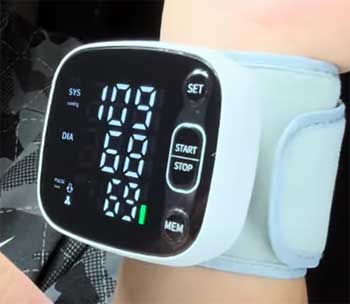
The Oklar Blood Pressure Monitor is another contender I tested, often retailing around $30-$40, making it one of the more affordable options.
It’s a no-frills arm monitor with a large LCD screen and simple controls, storing up to 180 readings for two users.
The accuracy was decent when I compared it to my doctor’s equipment, but it’s not FDA-cleared, which made me question its reliability for critical health tracking.
The Oklar uses AA batteries, which need replacing every few months, and there’s no app integration, so you’re stuck manually tracking your data.
The Withings BPM Connect’s Wi-Fi syncing, Health Mate app, and sleek, tubeless design make it far more convenient and modern, especially for tech-savvy users who want to track trends effortlessly.
- Withings BPM Connect Vs. Microlife Blood Pressure Monitor
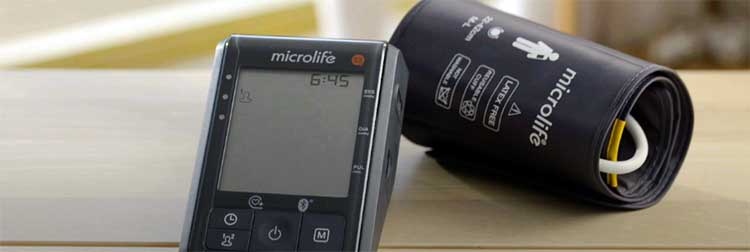
I also explored the Microlife BP3GX1-5A, priced around $60-$80, which is clinically validated and listed on ValidateBP.org for accuracy. It’s a robust choice with features like irregular heartbeat detection and a three-reading average function, which aligns with medical recommendations.
The cuff is comfortable, and it stores 99 readings per user, but like the Medline, it’s Bluetooth-only, lacking the Withings’ Wi-Fi convenience. The Microlife’s bulkier design and reliance on AA batteries were drawbacks for me compared to the Withings’ compact, rechargeable setup.
While the Microlife is a strong performer for home use, the Withings BPM Connect wins for its portability, longer battery life, and seamless integration with the Health Mate app, which offers more robust data tracking and sharing options.
Frequently Asked Questions (FAQ)
From my experience, the Withings BPM Connect is highly accurate. I’ve compared its readings to my doctor’s professional monitor, and they’re consistently within a few mmHg. It’s FDA-cleared and validated by clinical trials, meeting standards set by the European Society of Hypertension. Just make sure you position the cuff correctly—snug, about an inch above your elbow—for the best results. Any inconsistencies I’ve had were usually due to user error, like moving during a reading.
Accuracy varies, but in my testing, Withings and Omron stand out. Both are FDA-cleared and clinically validated, with readings that closely match professional equipment. I found the Withings BPM Connect slightly more consistent than the Omron Series 10, especially for home use, but both are reliable. Wrist monitors like Paramed tend to be less accurate due to positioning challenges. It really comes down to proper use—follow the instructions, and brands like Withings or Omron won’t steer you wrong.
Yes, the Withings BPM Connect is FDA-cleared, which means it’s been rigorously tested for accuracy and safety. I felt confident using it knowing it meets medical standards, and my doctor was comfortable relying on its data. The clearance also applies to its heart rate measurements, making it a solid choice for comprehensive monitoring.
The Withings BPM Connect is a one-time purchase, typically around $100, with no monthly fees. The Health Mate app is free, and there are no subscription costs for basic use. You’re getting a premium device without ongoing expenses, which is a big plus compared to some health tech that locks features behind paywalls. For the latest pricing, check Withings’ website or retailers like Amazon.
Why The Withings BPM Connect Is Worth It?
After months of using the Withings BPM Connect, I can’t imagine going back to a clunky, outdated monitor. Its accuracy, portability, and seamless app integration make it a must-have for anyone serious about their heart health.
Sure, it’s pricier than some, but the convenience and reliability are worth every penny. If you want a device that’s easy to use, travels well, and gives you data you can trust, grab this one—you won’t regret it.
